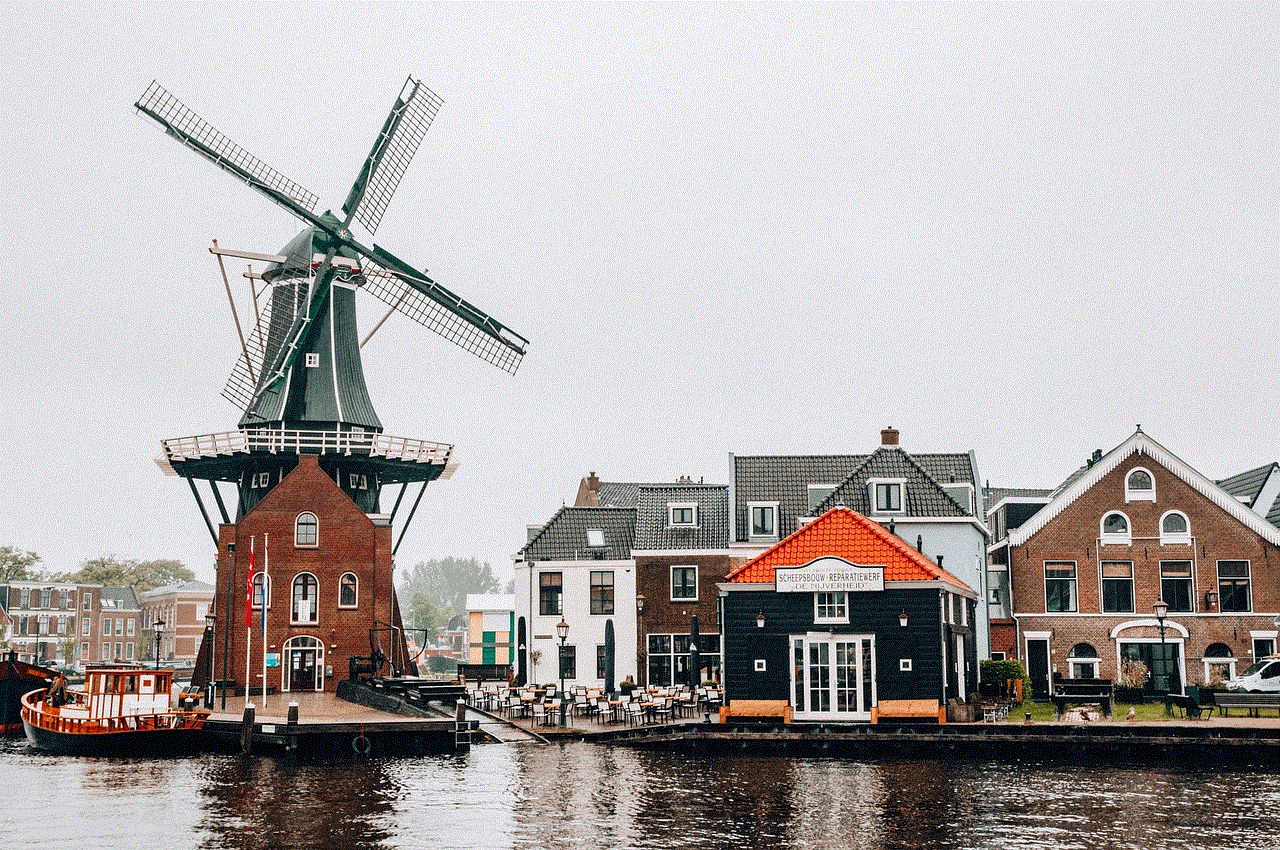historial de ubicaciones
In today’s world, technology plays a major role in our daily lives. From social media to navigation, it has become an essential part of our existence. One of the features that has gained popularity in recent years is the “historial de ubicaciones” or location history. This feature, available on most smartphones, tracks and records the user’s movements and stores it in a database. While this may seem like a convenient tool for navigation and tracking, it has also sparked debates about privacy and security concerns. In this article, we will delve deeper into the concept of “historial de ubicaciones” and its implications on our lives.
To understand “historial de ubicaciones” better, let’s first look at what it is and how it works. When a user enables this feature on their device, their phone tracks their movements using GPS, Wi-Fi, and cellular networks. This data is then stored in the device’s memory and can be accessed by the user at any time. It also provides a detailed map of the places the user has visited, the time spent at each location, and the routes taken. This data can also be shared with other apps and services, such as Google Maps, to provide personalized recommendations and suggestions.
One of the main advantages of “historial de ubicaciones” is its usefulness in navigation. With the help of this feature, users can easily find their way to a new place or track their previous routes. It also helps in planning trips and estimating travel time. Moreover, it is also helpful in locating a lost or stolen phone. By accessing the location history, users can determine where their phone was last used, making it easier to retrieve it.
However, the use of “historial de ubicaciones” has raised concerns about privacy. The thought of one’s movements being tracked and stored in a database can be unsettling for many. This data can reveal sensitive information about a person’s daily routine, habits, and even their home and workplace. It also poses a risk of stalking and surveillance if accessed by unauthorized individuals.
Moreover, the collection and storage of this data also raise questions about security. While companies claim to have strict privacy policies in place, there have been instances of data breaches and misuse of personal information. In 2018, it was revealed that Google was still tracking users’ location even after they had turned off their “historial de ubicaciones” feature. This raised concerns about the transparency and trustworthiness of these companies.
Another issue with “historial de ubicaciones” is the lack of control over the data collected. While users have the option to turn off the feature, it does not guarantee that their location data will not be collected and stored. Many apps and services require users to enable location services for their features to work, giving them access to the user’s location history. This lack of control over personal data can lead to its misuse and exploitation.
Furthermore, “historial de ubicaciones” has also been used by law enforcement agencies in criminal investigations. While this may seem like a positive use of the feature, it raises concerns about the privacy and rights of individuals. In some cases, the location history has been used as evidence to incriminate individuals, even when they were not aware that their movements were being tracked.
On the other hand, there are also potential benefits of “historial de ubicaciones” in terms of public safety. In times of natural disasters or emergencies, this feature can be used to locate individuals in need of help. It can also aid in contact tracing during a pandemic, as seen in the case of COVID-19. This data can be used to identify and track individuals who may have come in contact with an infected person, helping to contain the spread of the virus.
To address the concerns surrounding “historial de ubicaciones,” some measures have been taken by companies and governments. For instance, Google now allows users to auto-delete their location history after a set period. They have also updated their privacy policy to make it clearer for users to understand how their data is being used. In addition, some countries have implemented laws and regulations to protect personal data and hold companies accountable for any misuse.
In conclusion, “historial de ubicaciones” is a useful and convenient feature that has its benefits, such as navigation and public safety. However, it also raises valid concerns about privacy and security. As technology continues to advance, it is crucial for companies and governments to prioritize the protection of personal data. Users should also be aware of the implications of enabling features like “historial de ubicaciones” and take necessary precautions to safeguard their privacy.
how to make anonymous phone call
Making an anonymous phone call may seem like a daunting task, but with the right knowledge and tools, it can be easily accomplished. Whether you need to protect your identity for personal reasons or to conduct business in a discreet manner, there are various methods you can use to make an anonymous phone call. In this article, we will explore the different ways to make an anonymous phone call and provide you with tips to ensure your anonymity remains intact.
But first, let’s understand what an anonymous phone call is. An anonymous phone call is a call made without revealing the caller’s identity. This could be done by blocking the caller ID, using a third-party application, or using a disposable phone number. There are various reasons why someone may want to make an anonymous phone call. Some may want to keep their personal information private, while others may want to avoid unwanted calls or harassment.
One of the easiest ways to make an anonymous phone call is by blocking your caller ID. This feature is provided by most phone service providers and allows you to hide your phone number from the person you are calling. To use this feature, you can either enter a code before dialing the number or activate it in your phone settings. However, it is important to note that some phone service providers charge an additional fee for this service, so check with your provider before using it.
Another option is to use a third-party application to make an anonymous phone call. These applications, such as Burner, Hushed, or CoverMe, provide you with a temporary phone number that you can use to make calls. This means that your real phone number will not be revealed to the person you are calling. These applications also offer additional features such as call recording, call forwarding, and voicemail, making them a convenient option for making anonymous phone calls.
If you want to make an anonymous phone call without using your own phone, you can consider using a disposable phone. These are prepaid phones that can be purchased without any personal information and can be used for making calls without revealing your identity. However, this option may not be feasible for everyone as it requires purchasing a separate phone and service plan.
Another method to make an anonymous phone call is by using a payphone. These are public phones that do not require you to use your own phone or phone number. However, payphones are becoming less common and may not be easily accessible in certain areas. Additionally, it is important to note that some payphones may have surveillance cameras, so your anonymity may not be guaranteed.
For those who are tech-savvy, there are several online services that allow you to make free anonymous phone calls. These services use Voice over Internet Protocol (VoIP) technology to make calls through the internet, rather than a traditional phone line. Some popular options include Skype, Google Voice, and Line2. These services provide you with a virtual phone number that you can use to make calls without revealing your identity. However, these services may require you to create an account and provide some personal information.
While these methods may help you make an anonymous phone call, there are some precautions you should take to ensure your anonymity is not compromised. Firstly, make sure to use a different voice or tone when making the call. This will help prevent the person on the other end from recognizing your voice. Additionally, avoid using slang or phrases that may give away your identity. It is also important to keep the call short and to the point to avoid giving away any personal information.
Another important step is to disable any location services on your phone. This will prevent your location from being tracked through the call. You can also use a voice changer application to alter your voice and further protect your identity. Additionally, make sure to use a secure internet connection if you are making an anonymous phone call through an online service. This will prevent anyone from intercepting your call or tracking your location.
Furthermore, it is important to note that making an anonymous phone call does not give you the right to harass or threaten someone. It is still important to follow the laws and regulations of your country or state when making anonymous phone calls. Additionally, some countries have stricter laws regarding the use of anonymous calling services, so make sure to research and understand the laws before making any calls.
In conclusion, making an anonymous phone call can be easily achieved with the right methods and precautions. Whether you are trying to protect your identity or conduct business discreetly, there are various options available to make an anonymous call. From blocking your caller ID to using third-party applications or online services, choose the method that best suits your needs and ensures your anonymity. However, it is important to remember to use these methods responsibly and follow the laws and regulations of your country or state. With these tips in mind, you can make an anonymous phone call without any worries.
how to see location on instagram
Instagram has become one of the most popular social media platforms in the world, with over 1 billion active users. With its focus on visual content, it has become a go-to platform for users to share their photos and videos with their followers. However, Instagram is not just about sharing pictures and videos, it also allows users to explore different locations and see what others are up to around the world. In this article, we will discuss how to see location on Instagram and explore the different features that allow users to do so.
1. What is Instagram Location?
Before we dive into how to see location on Instagram, let’s first understand what Instagram Location is. It is a feature that allows users to tag their posts with a specific location, such as a city, landmark, or business. This enables other users to discover the post when searching for that particular location. Users can also add a location to their Instagram stories, making it easier for their followers to know where they are.
2. How to See Location on Instagram Posts?
To see the location on Instagram posts, follow these simple steps:
Step 1: Open the Instagram app on your phone and go to the post you want to see the location for.
Step 2: Tap on the post to open it and look for the location tag just below the username of the post.
Step 3: If the location tag is available, tap on it to see the location on the map.
Step 4: You can also tap on “View All” to see all the posts tagged with that location.
3. How to Explore Locations on Instagram?
Apart from seeing the location on individual posts, Instagram also allows users to explore different locations. Here’s how you can do it:
Step 1: Open the Instagram app and go to the search tab.
Step 2: Type the location you want to explore in the search bar.
Step 3: You will see a list of locations with that name. Tap on the one you are interested in.
Step 4: You will be taken to the location’s page, where you can see the top posts, recent posts, and stories tagged with that location.
4. How to See Location on Instagram Stories?
Instagram stories are becoming increasingly popular, and users can also add a location to their stories. Here’s how you can see the location on Instagram stories:
Step 1: Open the Instagram app and go to the story you want to see the location for.



Step 2: Tap on the story to open it and look for the location tag just below the username of the story.
Step 3: If the location tag is available, tap on it to see the location on the map.
Step 4: You can also tap on “View All” to see all the stories tagged with that location.
5. How to Use Location Stickers on Instagram Stories?
Apart from tagging a location, Instagram also offers users the option to add location stickers to their stories. Here’s how you can do it:
Step 1: Open the Instagram app and create a new story.
Step 2: Click or select a photo or video to add to your story.
Step 3: Tap on the sticker icon at the top of the screen.
Step 4: Select the “Location” sticker from the available options.
Step 5: Type in the location you want to add.
Step 6: You can choose from different location stickers that appear on the screen.
Step 7: Customize the sticker’s appearance and add it to your story.
6. How to See Location on Instagram Live?
Instagram Live is another popular feature that allows users to broadcast live videos to their followers. Here’s how you can see the location on Instagram Live:
Step 1: Open the Instagram app and go to the live video you want to see the location for.
Step 2: Tap on the video to open it and look for the location tag just below the username of the user.
Step 3: If the location tag is available, tap on it to see the location on the map.
Step 4: You can also tap on “View All” to see all the live videos being broadcasted from that location.
7. How to Search for a Specific Location on Instagram?
If you’re looking for a specific location on Instagram, you can use the search feature to find it. Here’s how:
Step 1: Open the Instagram app and go to the search tab.
Step 2: Type the location you want to search for in the search bar.



Step 3: You will see a list of locations with that name. Tap on the one you are interested in.
Step 4: You will be taken to the location’s page, where you can see the top posts, recent posts, and stories tagged with that location.
8. How to Use Instagram’s Explore Page to Discover New Locations?
Apart from searching for specific locations, Instagram’s Explore page is a great way to discover new places. Here’s how you can use it:
Step 1: Open the Instagram app and go to the Explore page.
Step 2: At the top of the screen, you will see different categories such as Food, Travel, Art, etc. Tap on the “Places” category.
Step 3: You will see a list of popular locations. Scroll through them to find a place you’re interested in.
Step 4: You can also tap on “See All” to see all the locations in that category.
9. How to Use Instagram’s Location Filters?
Instagram also offers location filters that users can add to their posts and stories. Here’s how you can use them:
Step 1: Open the Instagram app and create a new post or story.
Step 2: Swipe left on the available filters until you reach the “Location” filters.
Step 3: Select the location filter you want to use.
Step 4: Take a photo or video or choose one from your gallery to add the location filter to it.
10. How to Use Instagram’s Geotags?
Geotags are another way to see location on Instagram. It is a feature that allows users to add a specific location to their posts. Here’s how you can use it:
Step 1: Open the Instagram app and create a new post.
Step 2: Tap on “Add Location” just below the caption section.
Step 3: Type in the location you want to add.
Step 4: Select the correct location from the list of suggestions.
Step 5: Complete your post and share it with your followers.



In conclusion, Instagram offers various ways for users to see location on the platform. From tagging posts and stories to using location filters and geotags, there are plenty of options for users to explore different locations and connect with others from around the world. So next time you come across an interesting location on Instagram, don’t forget to use these features to discover more about it.